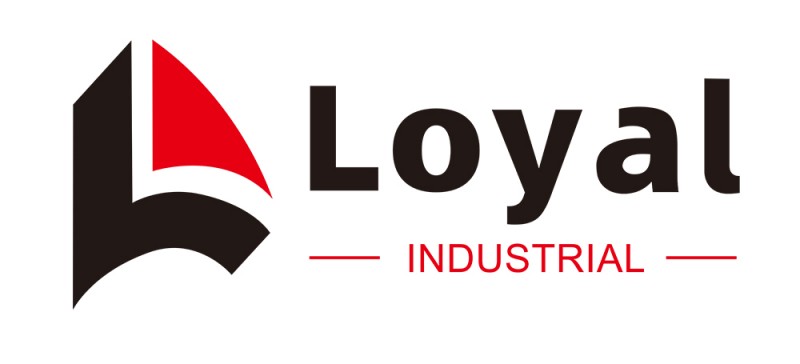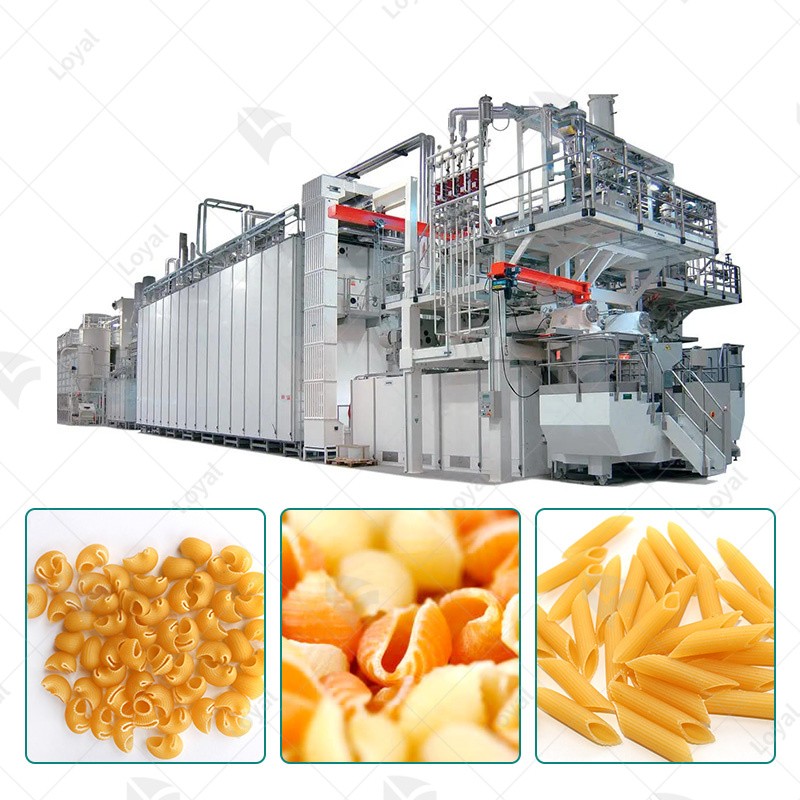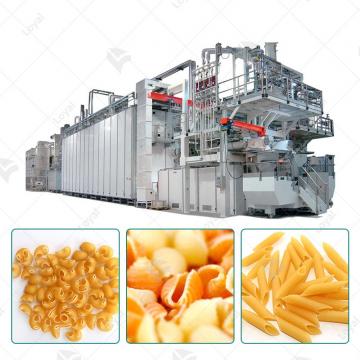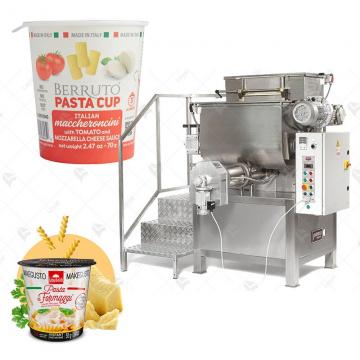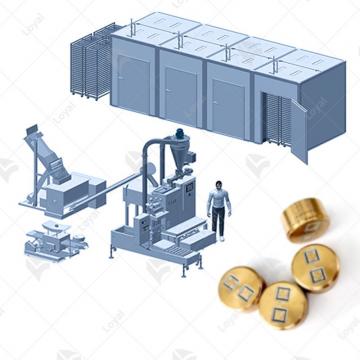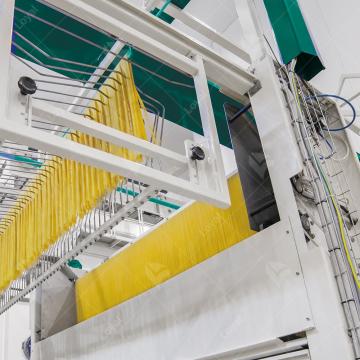Unleashing High Efficiency: The Ultimate Guide to Pasta Macaroni Machines
Unleashing High Efficiency: The Ultimate Guide to Pasta Macaroni Machines
Introduction of Short-Cut Pasta Production Line
The modern pasta and macaroni production industry is evolving rapidly, driven by innovation and automation. This section provides an overview of the industry's current landscape, highlighting the pivotal role that innovation plays in shaping manufacturing processes. It introduces the central theme of the article: the transformative impact of pasta macaroni machines on achieving high efficiency.
Shandong Loyal Industrial Co., Ltd. has incorporated advanced technologies from Lineapasta and lazzaretti in the production of its macaroni.
Evolution of Pasta Macaroni Production Technology
Delving into the historical background of pasta and macaroni production methods, this section explores the challenges faced in traditional manufacturing, emphasizing the need for innovation. It traces the industry's transition from manual to automated processes, setting the stage for the emergence of advanced pasta macaroni machines.
Traditional pasta and macaroni production methods were characterized by manual labor and a multitude of challenges. These challenges include time-consuming processes, a higher margin for error, and limitations in production capacity. The need for innovation became evident as manufacturers sought ways to overcome these obstacles.
The evolution of pasta macaroni production technology witnessed a pivotal shift towards automation. Automated processes introduced efficiency, precision, and increased output. Early attempts involved the mechanization of specific production steps, gradually paving the way for fully automated machines. This transition not only addressed challenges but also opened doors to new possibilities in the industry.
As technology continued to advance, so did pasta macaroni production machinery. The section outlines the development of sophisticated machines designed to handle the entire production process autonomously. Innovations like automated mixing, extrusion, cutting, and drying processes revolutionized the industry, marking a significant departure from traditional methods.
Types of Pasta Macaroni Machines
A comprehensive exploration of various types of pasta macaroni machines takes center stage in this section. Differentiating factors and specific functionalities of each machine type are discussed, providing valuable insights for businesses seeking the most suitable equipment for their unique production needs.
This category covers machines that utilize extrusion technology to shape pasta and macaroni. It details the different types of extrusion-based machines, such as single-screw and twin-screw extruders. Each type is analyzed for its advantages and suitability in various production scenarios.
Pressing machines, another category explored in this section, rely on molds and presses to create pasta shapes. The intricacies of these machines, including the variety of molds available and the flexibility they offer in shaping different pasta types, are discussed. Businesses can gain insights into the versatility of pressing machines for diverse product lines.
Beyond shaping, drying, and packaging are integral steps in pasta macaroni production. This part of the section explores the types of machines used for drying pasta effectively and the automated packaging solutions available. The emphasis is on ensuring the end-to-end automation of the production process.
Key Features and Technologies
This section meticulously examines the key features that contribute to the efficiency of pasta macaroni machines. It sheds light on the integration of cutting-edge technologies such as artificial intelligence, machine learning, smart sensors, and real-time data analytics. Understanding these features is crucial for maximizing production optimization.
The integration of artificial intelligence (AI) in pasta macaroni machines brings adaptive learning capabilities. AI algorithms optimize the production process by analyzing data, predicting maintenance needs, and making real-time adjustments. This ensures consistent quality and efficiency throughout production.
Machine learning algorithms contribute to process optimization by continuously learning from data patterns. This part explores how these algorithms enhance the precision of pasta shaping, drying, and packaging, leading to improved overall efficiency and reduced waste.
Smart sensors play a pivotal role in maintaining quality standards. They are capable of monitoring parameters such as moisture content, temperature, and texture during production. The section details how these sensors contribute to quality control and the prevention of defects in the final product.
The utilization of real-time data analytics provides manufacturers with valuable insights into production efficiency. Analyzing data generated at various stages helps identify bottlenecks, optimize workflows, and make data-driven decisions to enhance the overall efficiency of pasta macaroni production.
Incorporating these advanced features and technologies into pasta macaroni machines represents a paradigm shift, ensuring manufacturers stay at the forefront of innovation in the competitive landscape.
Efficiency Standards in Pasta Production
An in-depth analysis of how pasta macaroni machines redefine efficiency in the production process is the focal point here. Through a comparative study with traditional and semi-automated methods, the article emphasizes the streamlined processes and minimized errors achieved through innovative machinery.
Case Studies
Real-world examples of successful implementation of pasta macaroni machines are presented in this section. Highlighting renowned brands like Barilla, Banza, Rao's Homemade, "Garofalo," De Cecco, and Whole Foods 365 Everyday Value, these case studies showcase increased efficiency and the setting of new standards in pasta production.
Maintenance and Optimization
Guidance on maintenance practices ensures continuous high efficiency in pasta macaroni machines. Strategies for optimizing performance, including the role of training and support, are detailed, providing valuable insights for businesses aiming to maximize the benefits of automated production.
Future Trends in Pasta Manufacturing
This section explores upcoming trends and developments in the pasta production industry. Predictions for the future of pasta macaroni machine technology are discussed, along with anticipated advancements that will further enhance efficiency and production capabilities.
Challenges and Solutions
The challenges faced in adopting pasta macaroni machines are openly discussed in this section. Proposed solutions and strategies for overcoming these challenges are provided, addressing the dynamic landscape and guiding businesses in adapting to industry demands.
Conclusion
The final section offers a recap of the guide to pasta macaroni machines, emphasizing their impact on efficiency. Concluding thoughts reflect on the continuous innovation shaping the future of pasta manufacturing, with a strong emphasis on the industry's commitment to setting and exceeding efficiency benchmarks.
